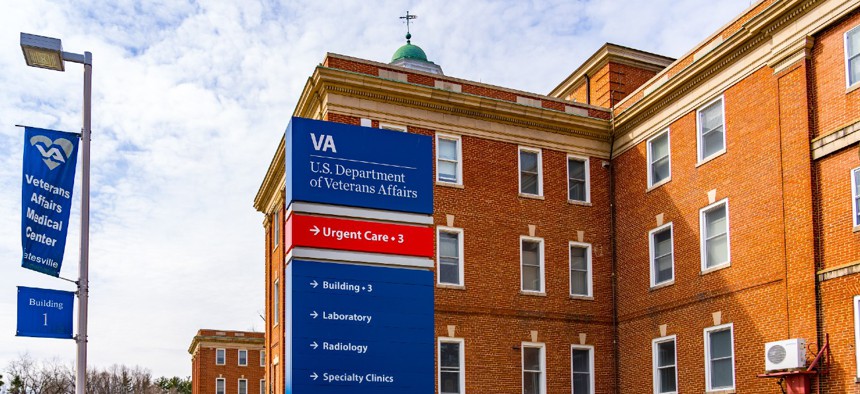
gsheldon / iStock.com
VA Suicide Prevention Teams Report Burnout as Department Fails to Ensure Proper Staffing
VA and Congress are doing more to identify vets at risk for suicide, but not keeping pace with staffing.
Psychologists and social workers at the Veterans Affairs Department who specialize in suicide prevention are feeling overwhelmed and understaffed, according to a new report, which found the agency has failed to ensure the specialized workforce has kept pace with new responsibilities.
VA’s suicide prevention initiative has taken on a far greater workload since its inception in 2007, the Government Accountability Office found in a report released on Monday, with new initiatives and policies consistently adding more work since that time. Local teams dedicated to prevent veteran suicides at VA facilities across the country are identifying more veterans at risk of suicide and taking more proactive measures to catch early signs, but the department has failed to account for the impact of that workload growth.
VA, veterans service groups, lawmakers and other stakeholders have for years placed an emphasis on reducing veterans suicide, the cause of death for 18 veterans per day according to VA’s latest annual report on the topic. In 2016, VA began using predictive modeling to identify veterans at risk of suicide. In 2017, VA created the Office of Mental Health and Suicide Prevention, which provides policy guidelines and hosts regular calls with local offices to coordinate efforts. The following year the department launched an initiative to conduct annual screenings of its patients for mental health warnings signs, with follow ups as necessary. A veterans crisis line launched in 2007 frequently makes referrals to local suicide prevention teams for additional action, who are also responsible for training all VA staff on recognizing suicidal traits and tracking suicide data.
Those teams told GAO their small staffs have struggled to keep pace with a “constant deluge” of new programs, leading to burnout among the employees. VA leadership conceded it has never reviewed the impact of those growing responsibilities or if its initial assumptions about staffing have held up. The department set the goal in 2017 of maintaining one suicide prevention worker for every 10,000 patients a facility serves, but noted local leadership makes its own decisions on staffing levels. Every medical center, as well as each outpatient facility with at least 10,000 patients, is required to have at least one suicide prevention staffer.
“Without a comprehensive understanding of local teams’ workload in the face of recent program growth,” GAO said, “[the Veterans Health Administration] may be overwhelming these teams with new activities and initiatives, which ultimately could reduce teams’ effectiveness in serving veterans at risk for suicide.”
Because the department does not fully understand the local workloads, GAO added, VA is not ensuring it has adequate staffing resources. It never engaged stakeholders in creating its staffing benchmarks, which have not been updated since 2017. It failed to consider that needs differ by location, as, for example, some areas consistently see higher levels of veterans suicides than others. VA successfully hired 1,000 mental health care professionals in 2019, though it did so without additional funding. It employs about 450 suicide prevention workers in total.
President Trump signed a measure into law last year that required a comprehensive review of VA’s suicide prevention program, including whether to splinter off the initiative into its own program office. Lawmakers codified that every hospital and large outpatient center must have its own, dedicated suicide prevention worker and sought to drive more hiring for those specialists.
Per GAO’s recommendations, VA agreed to complete a review of how facilities use suicide prevention teams, what their challenges are and the impact of their growing responsibilities. It will also develop a more comprehensive staffing model that reflects evolving needs. VA management also noted it expects to soon issue more overarching guidance on department suicide prevention policy.
Sen. Jon Tester, D-Mont., who cosponsored the legislation that required GAO's report, vowed to push VA to use recently authorized resources to "ensure no veteran falls through the cracks."
“VA staff and suicide prevention professionals are our nation’s first line of defense when it comes to combatting veteran suicides," Tester said. "While this report found that VA has taken positive steps to identify more at-risk veterans and connect veterans to mental health care through its suicide prevention teams, clearly more needs to be done to support VA teams in preventing veteran suicides."







